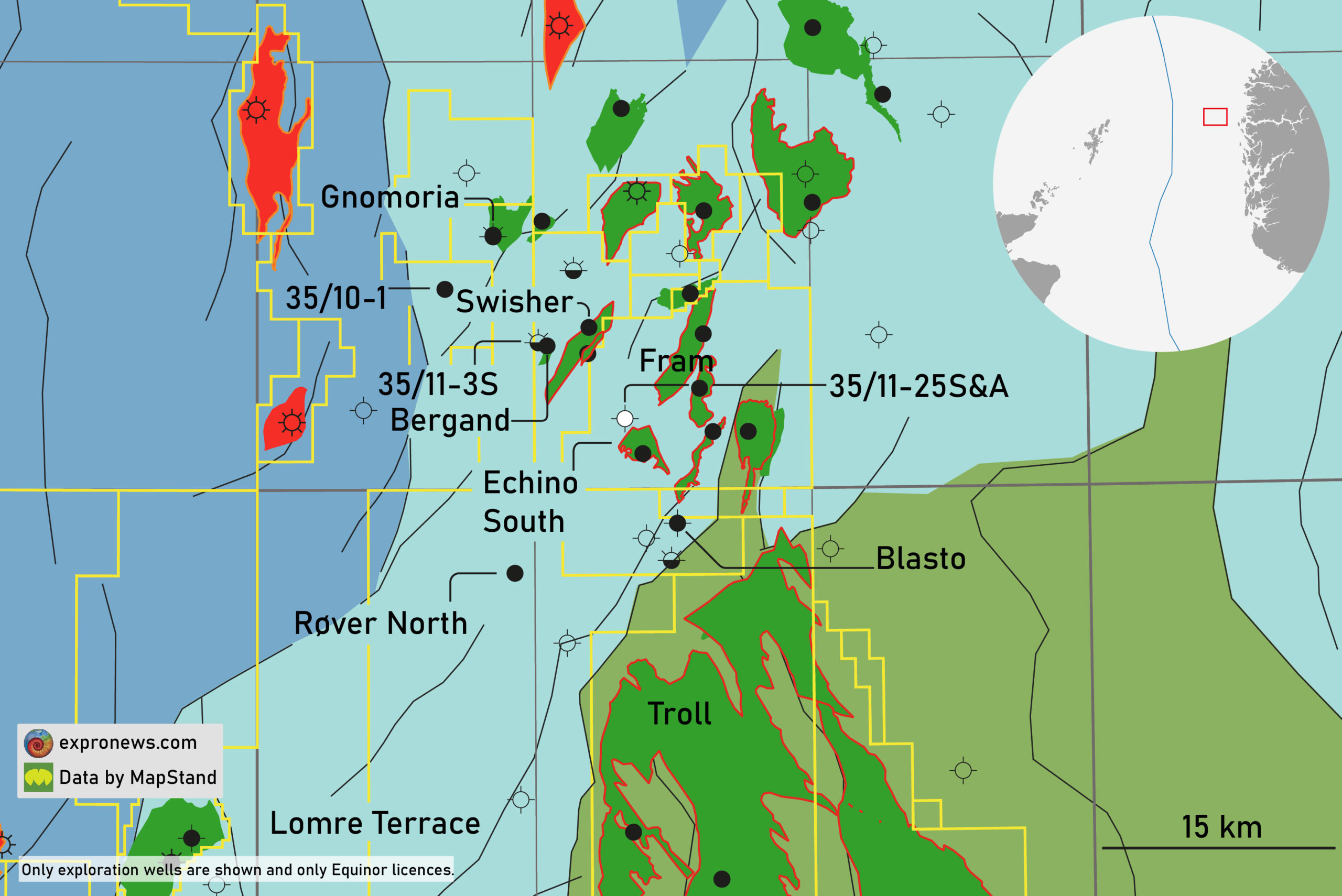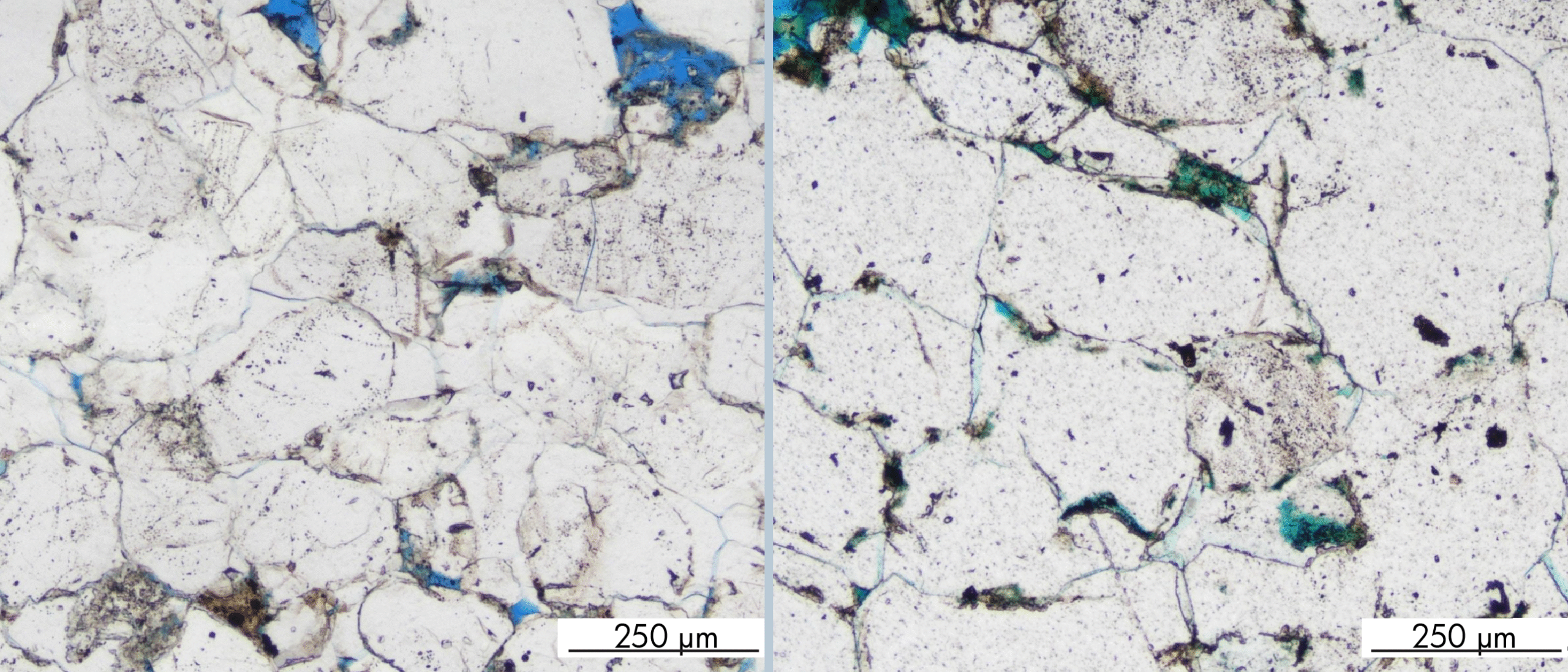Yesterday, the NPD announced that well 35/11-25S and its side-track 25A drilling the Apodida prospect both came in dry. With the S well targeting Upper Jurassic Sognefjord Fm sandstones and the 25A well aiming for Middle Jurassic Brent, the string of recent discoveries in the wider Fram area has now come to a (temporary) halt.
During the recent NCS – Recent Advances in Exploration Technology Conference, Equinor’s VP Exploration North Sea Kristina Helland-Hansen presented about the Greater Fram area and was very upbeat about the area’s potential. With the drilling results of Apodida now available, the company and its PL090 licence partners Vår Energi, Neptune and Idemitsu will no doubt embark on a thorough dry well analysis.
Downthrown fault block
The 35/11-25S/A well was drilled just to the northwest of the Echino South discovery. Situated in a more downthrown fault block with respect to Echino, the structural setting of well 35/11-25S/A is probably comparable to what was found by 35/11-8S as shown in the cross-section below.

There may be two explanations as to why both prospects turned out dry. First of all, cross-fault leakage may have taken place towards the more updip Echino South Brent and Sognefjord reservoirs. Secondly, a lack of lateral closure towards the more updip 35/11-8S discovery may have prevented effective trapping of hydrocarbons in Apodida.
The scenario whereby the prospect didn’t experience hydrocarbon charge seems unlikely given the accumulations in the vicinity. In addition, hydrocarbon migration modelling performed by Migris also showed that the location experienced oil migration with a 99% probability for the for the Upper Jurassic and 89% for the Middle Jurassic.
Fram area exploration history
Let’s have a quick look at the exploration history of the greater Fram area, as was also presented by Helland-Hansen during the conference mentioned above. It will turn out that the Apodida well is not the first surprise encountered.
The cluster of Fram fields was discovered in the early 1990s, with oil and associated gas reservoired in Brent and Upper Jurassic shallow marine Sognefjord Fm and younger deep marine intra-Draupne Fm sandstones.
During the years when the Fram accumulations were proven, other companies chased the more downdip areas of the Lomre Terrace, with for instance Den Norske Stats Oljeselskap drilling the 35/10-1 well further west in 1992. Even earlier, Mobil Norway drilled 35/11-3S just west of the later Swisher discovery in 1989 and found the Brent to be water wet. The results of these wells must have initiated a break of activity in the area.
Another try
The next phase of exploration north of Troll and west of Fram commences in 2018 when Equinor drilled the Gnomoria prospect. Although the 35/10-4 well proved hydrocarbon-filled Upper Jurassic deep marine sandstones, reservoir quality turned out to be compromised due to cementation. The subsequent Bergand well (35/11-22S) also found oil (in Upper Jurassic Heather Fm sands), but not in the expected Brent and Statfjord targets.
As Helland-Hansen alluded to in her talk, the results from those wells gave the company some useful hints to a larger oil puzzle. At the same time, it was also clear that only through persistence and careful integration of all the newly acquired data further exploration could be justified.
Third time lucky
And persistence paid off, as the company then embarked on a string of four consecutive discoveries from Echino South, via Swisher and Røver North to Blasto being drilled most recently. With a combined potential volume of 260 MMboe recoverable, this can certainly be seen as proof of the potential of the area. Even more so because all four discoveries carried different risks and again resulted in some surprises such as the much larger than expected volume in the Brent in Echino South.
The fact that the trend has now been interrupted does not mean that Equinor gives up on exploring the area. Later this year, the company will drill the Toppand prospect situated to the west of Echino South, and Helland-Hansen also announced that more 4D will be acquired to further identify and de-risk prospects.
Will this lead to an additional 2022 drilling campaign? We will see; for now the Deepsea Atlantic has moved back to the Stord Basin south of Troll where it will re-enter the 31/11-1S well it had previously started drilling before moving over to the Fram area.
HENK KOMBRINK





